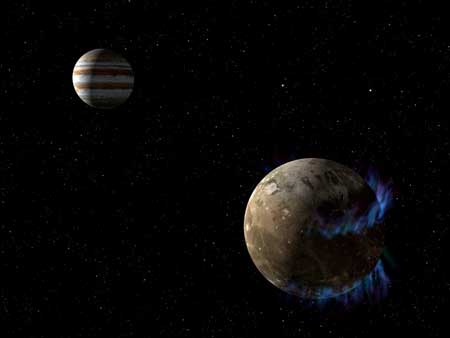 Newly analyzed data from the Galileo spacecraft's flybys of one of Jupiter's moons two decades ago is yielding fresh insights: the magnetic field around the moon Ganymede makes it unlike any other in the solar system.
Newly analyzed data from the Galileo spacecraft's flybys of one of Jupiter's moons two decades ago is yielding fresh insights: the magnetic field around the moon Ganymede makes it unlike any other in the solar system.
Apr 30th, 2018
Read more
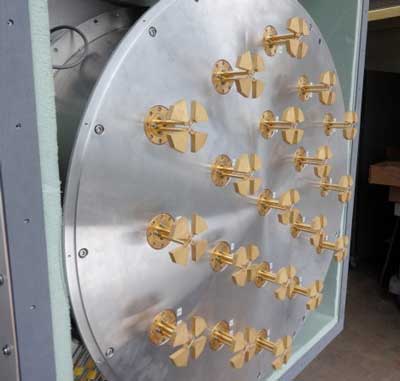 Innovation advances 'phased array feed' imaging system.
Innovation advances 'phased array feed' imaging system.
Apr 30th, 2018
Read more
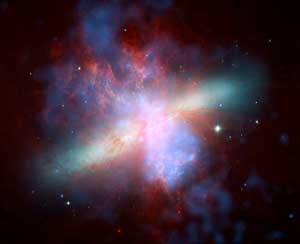 New findings reveal surprising distribution of star-forming cores outside of our galaxy.
New findings reveal surprising distribution of star-forming cores outside of our galaxy.
Apr 30th, 2018
Read more
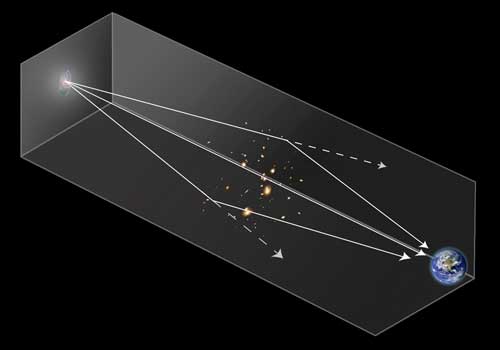 New theoretical work suggests that under the right circumstances, and with a little luck, NASA's upcoming James Webb Space Telescope will be able to capture light from single stars within that first generation of stars.
New theoretical work suggests that under the right circumstances, and with a little luck, NASA's upcoming James Webb Space Telescope will be able to capture light from single stars within that first generation of stars.
Apr 25th, 2018
Read more
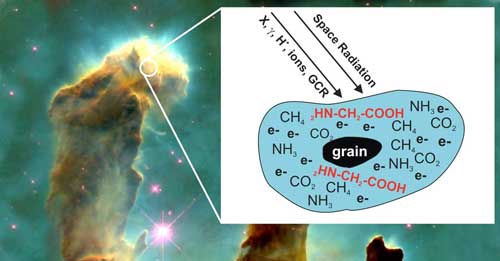 In a laboratory experiment that mimics astrophysical conditions, with cryogenic temperatures in an ultrahigh vacuum, scientists used an electron gun to irradiate thin sheets of ice covered in basic molecules of methane, ammonia and carbon dioxide. These simple molecules are ingredients for the building blocks of life.
In a laboratory experiment that mimics astrophysical conditions, with cryogenic temperatures in an ultrahigh vacuum, scientists used an electron gun to irradiate thin sheets of ice covered in basic molecules of methane, ammonia and carbon dioxide. These simple molecules are ingredients for the building blocks of life.
Apr 25th, 2018
Read more
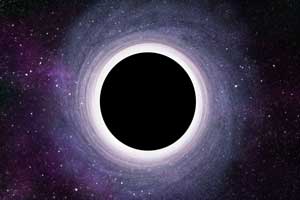 Astronomers are beginning to understand what happens when black holes get the urge to roam the Milky Way.
Astronomers are beginning to understand what happens when black holes get the urge to roam the Milky Way.
Apr 24th, 2018
Read more
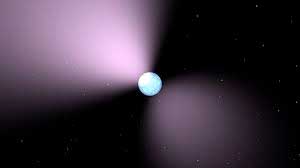 Scientists have explained how neutron stars generate intense directed radio emission. They developed a model based on the transitions of particles between gravitational states, i.e. quantum states in gravitational field.
Scientists have explained how neutron stars generate intense directed radio emission. They developed a model based on the transitions of particles between gravitational states, i.e. quantum states in gravitational field.
Apr 24th, 2018
Read more
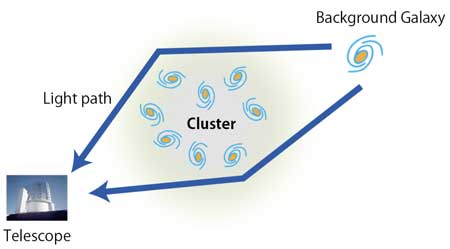 Analysis of gravitational lensing data by an international research team reveals that the evolution of galaxy clusters is dictated by a surprisingly simple law, which clearly shows that they are still growing.
Analysis of gravitational lensing data by an international research team reveals that the evolution of galaxy clusters is dictated by a surprisingly simple law, which clearly shows that they are still growing.
Apr 24th, 2018
Read more
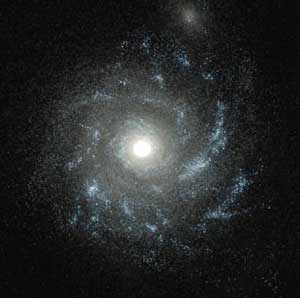 A 'deep learning' algorithm trained on images from cosmological simulations has been surprisingly successful at classifying real galaxies in Hubble images.
A 'deep learning' algorithm trained on images from cosmological simulations has been surprisingly successful at classifying real galaxies in Hubble images.
Apr 23rd, 2018
Read more
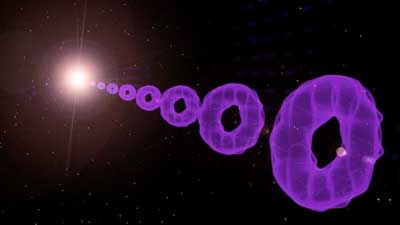 An expanding cloud of atoms could offer insight into unanswered cosmological questions.
An expanding cloud of atoms could offer insight into unanswered cosmological questions.
Apr 19th, 2018
Read more
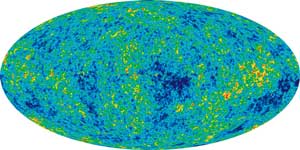 Researchers have developed a new way to improve our knowledge of the Big Bang by measuring radiation from its afterglow, called the cosmic microwave background radiation. The new results predict the maximum bandwidth of the universe, which is the maximum speed at which any change can occur in the universe.
Researchers have developed a new way to improve our knowledge of the Big Bang by measuring radiation from its afterglow, called the cosmic microwave background radiation. The new results predict the maximum bandwidth of the universe, which is the maximum speed at which any change can occur in the universe.
Apr 19th, 2018
Read more
 Scientists explored ways to integrate the logistics of space travel by looking at a campaign of lunar missions, spacecraft design, and creating a framework to optimize fuel and other resources.
Scientists explored ways to integrate the logistics of space travel by looking at a campaign of lunar missions, spacecraft design, and creating a framework to optimize fuel and other resources.
Apr 19th, 2018
Read more
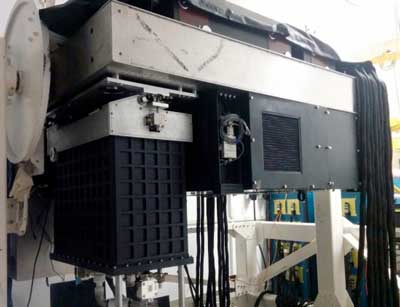 Physicists and astronomers team up to commission the most advanced camera in the world.
Physicists and astronomers team up to commission the most advanced camera in the world.
Apr 16th, 2018
Read more
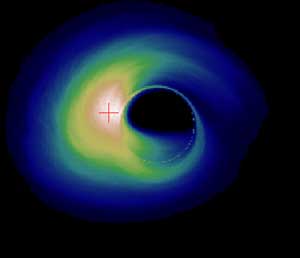 Astrophysicists answer this question by computing images of feeding non-Einsteinian black holes.
Astrophysicists answer this question by computing images of feeding non-Einsteinian black holes.
Apr 16th, 2018
Read more
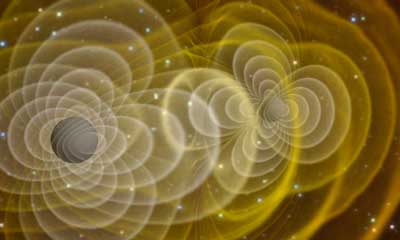 Every few minutes a pair of black holes smash into each other. Now scientists have developed a way to listen in on these events.
Every few minutes a pair of black holes smash into each other. Now scientists have developed a way to listen in on these events.
Apr 12th, 2018
Read more
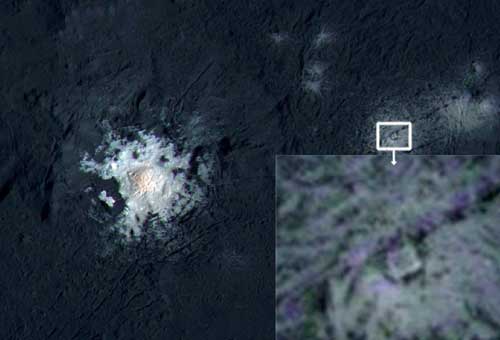 A well-known experiment with young people bouncing a ball showed that when an observer focuses on counting the passes, he does not detect if someone crosses the stage disguised as a gorilla. According to researchers, something similar could be happening to us when we try to discover intelligent non-earthly signals, which perhaps manifest themselves in dimensions that escape our perception, such as the unknown dark matter and energy.
A well-known experiment with young people bouncing a ball showed that when an observer focuses on counting the passes, he does not detect if someone crosses the stage disguised as a gorilla. According to researchers, something similar could be happening to us when we try to discover intelligent non-earthly signals, which perhaps manifest themselves in dimensions that escape our perception, such as the unknown dark matter and energy.
Apr 10th, 2018
Read more
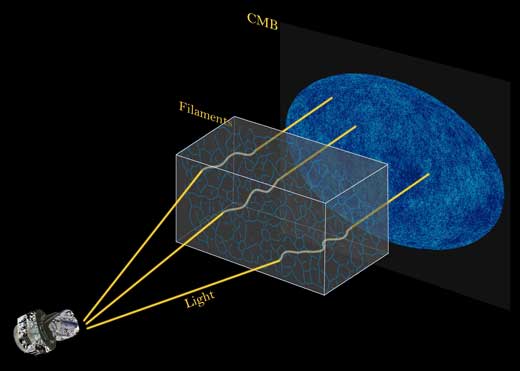 Researchers map the network of filaments connecting the universe's visible matter.
Researchers map the network of filaments connecting the universe's visible matter.
Apr 10th, 2018
Read more
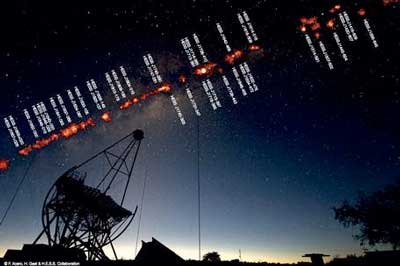 The HESS international collaboration has published the results of fifteen years of gamma ray observations of the Milky Way. Its telescopes installed in Namibia have studied populations of pulsar wind nebulae and supernova remnants, as well as microquasars, never before detected in gamma rays.
The HESS international collaboration has published the results of fifteen years of gamma ray observations of the Milky Way. Its telescopes installed in Namibia have studied populations of pulsar wind nebulae and supernova remnants, as well as microquasars, never before detected in gamma rays.
Apr 9th, 2018
Read more
 Newly analyzed data from the Galileo spacecraft's flybys of one of Jupiter's moons two decades ago is yielding fresh insights: the magnetic field around the moon Ganymede makes it unlike any other in the solar system.
Newly analyzed data from the Galileo spacecraft's flybys of one of Jupiter's moons two decades ago is yielding fresh insights: the magnetic field around the moon Ganymede makes it unlike any other in the solar system.
 Subscribe to our Space Exploration News feed
Subscribe to our Space Exploration News feed















